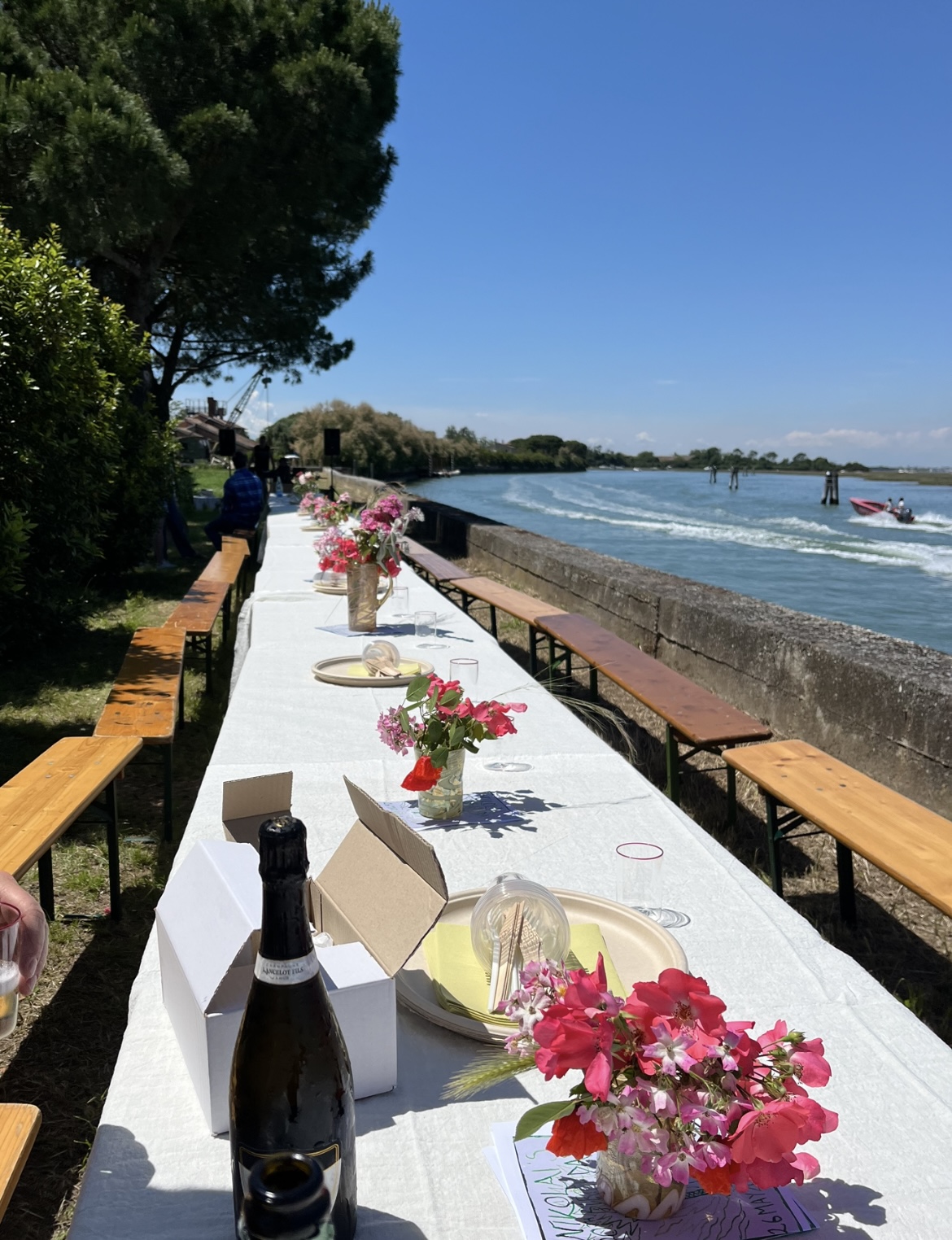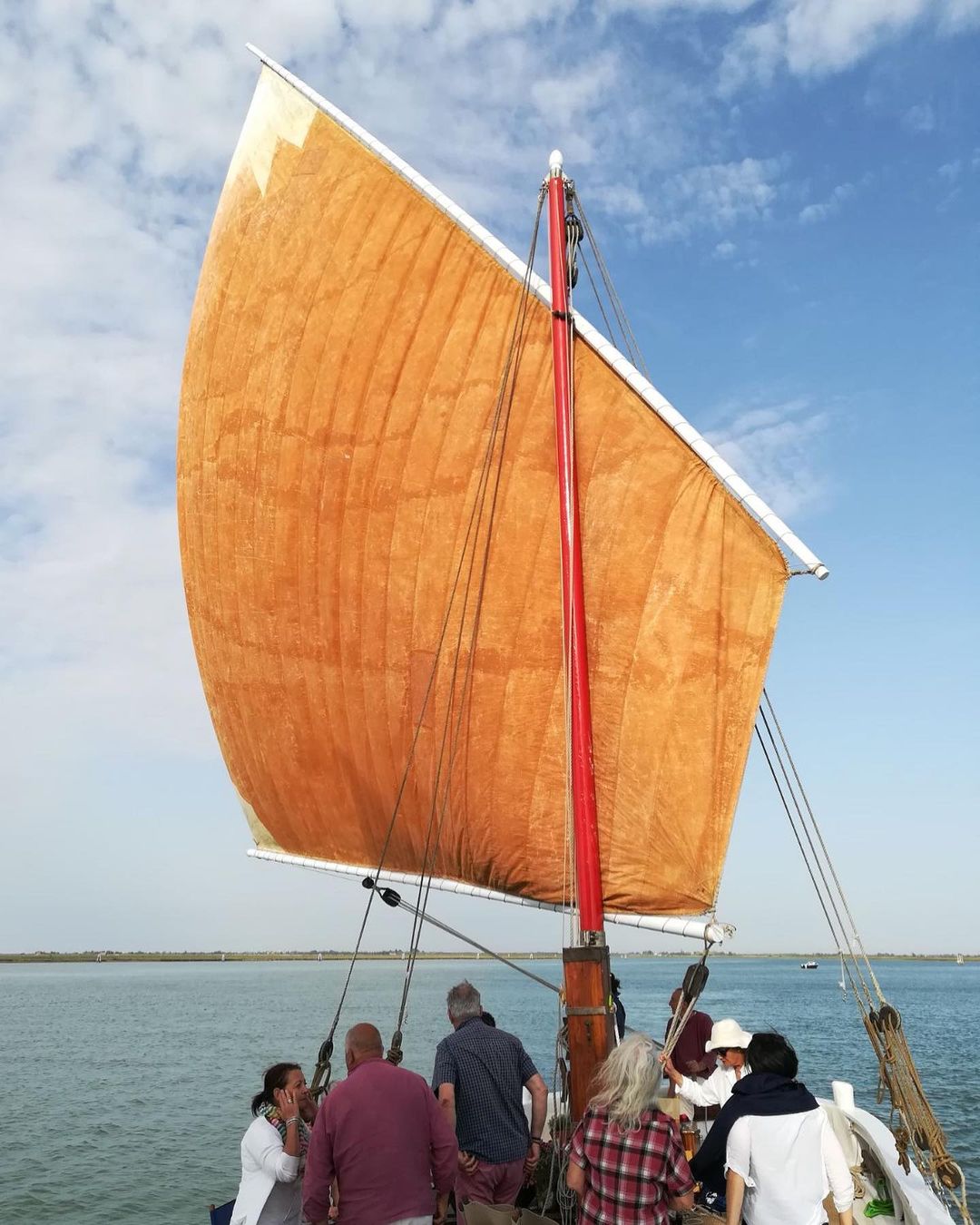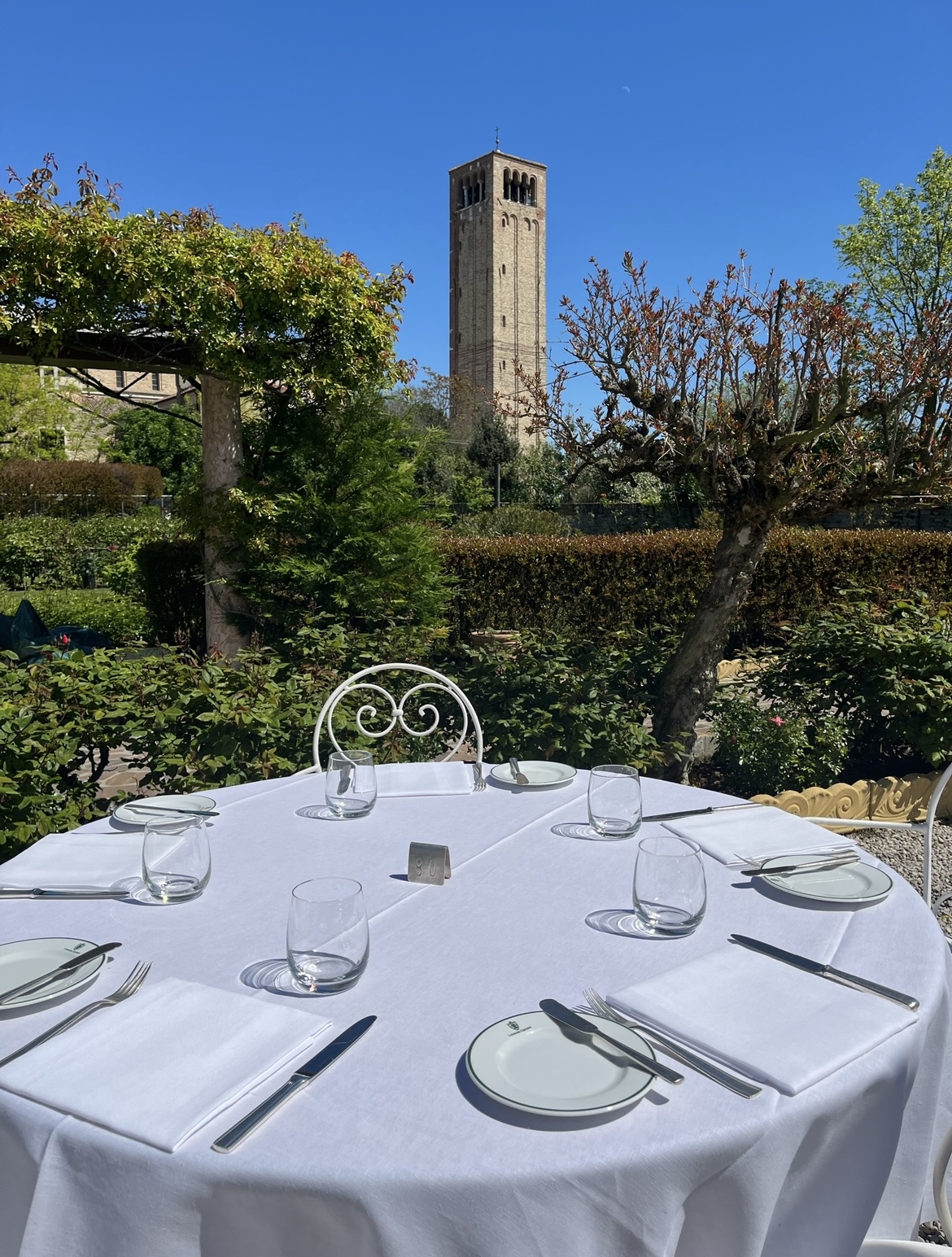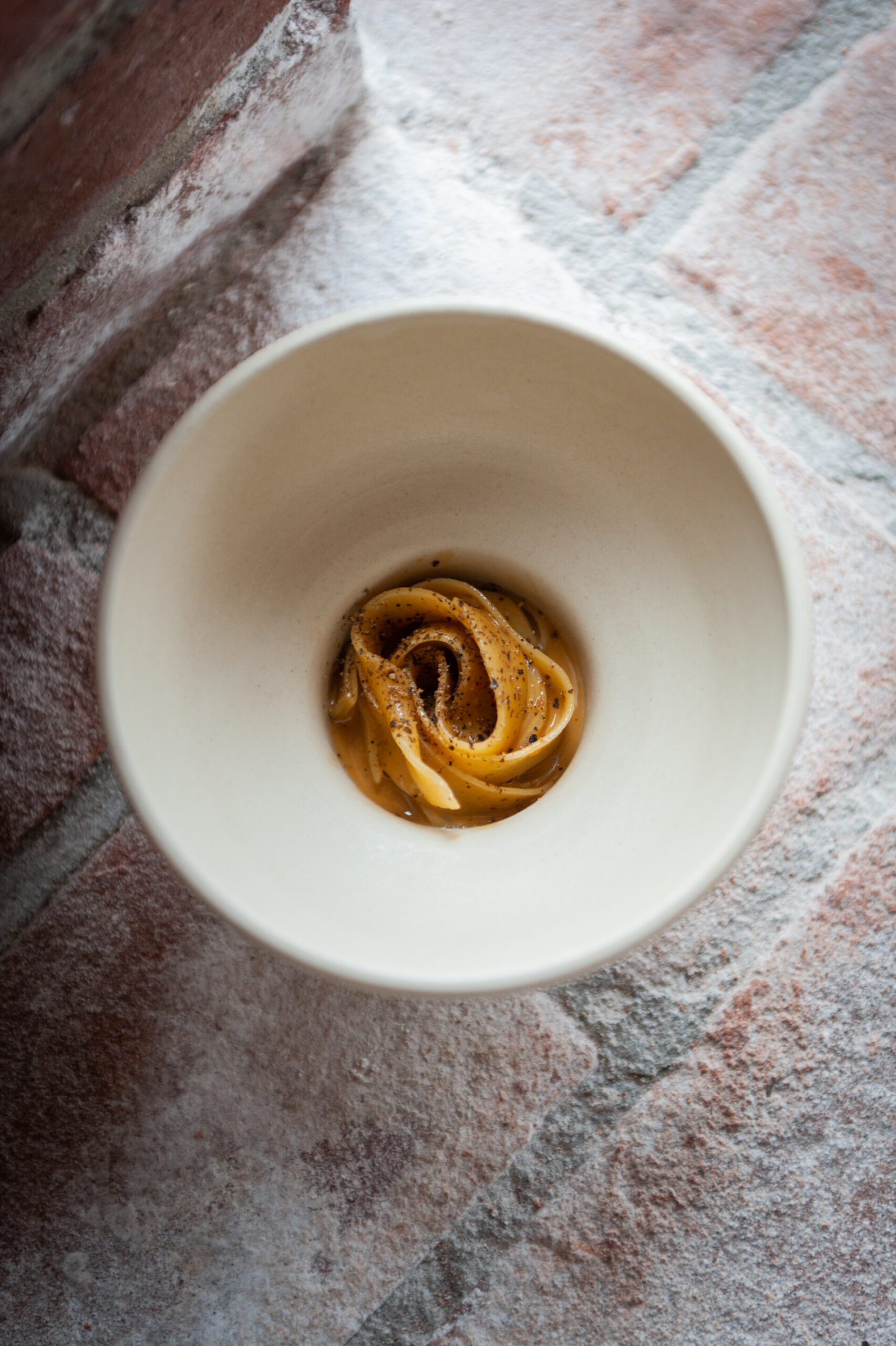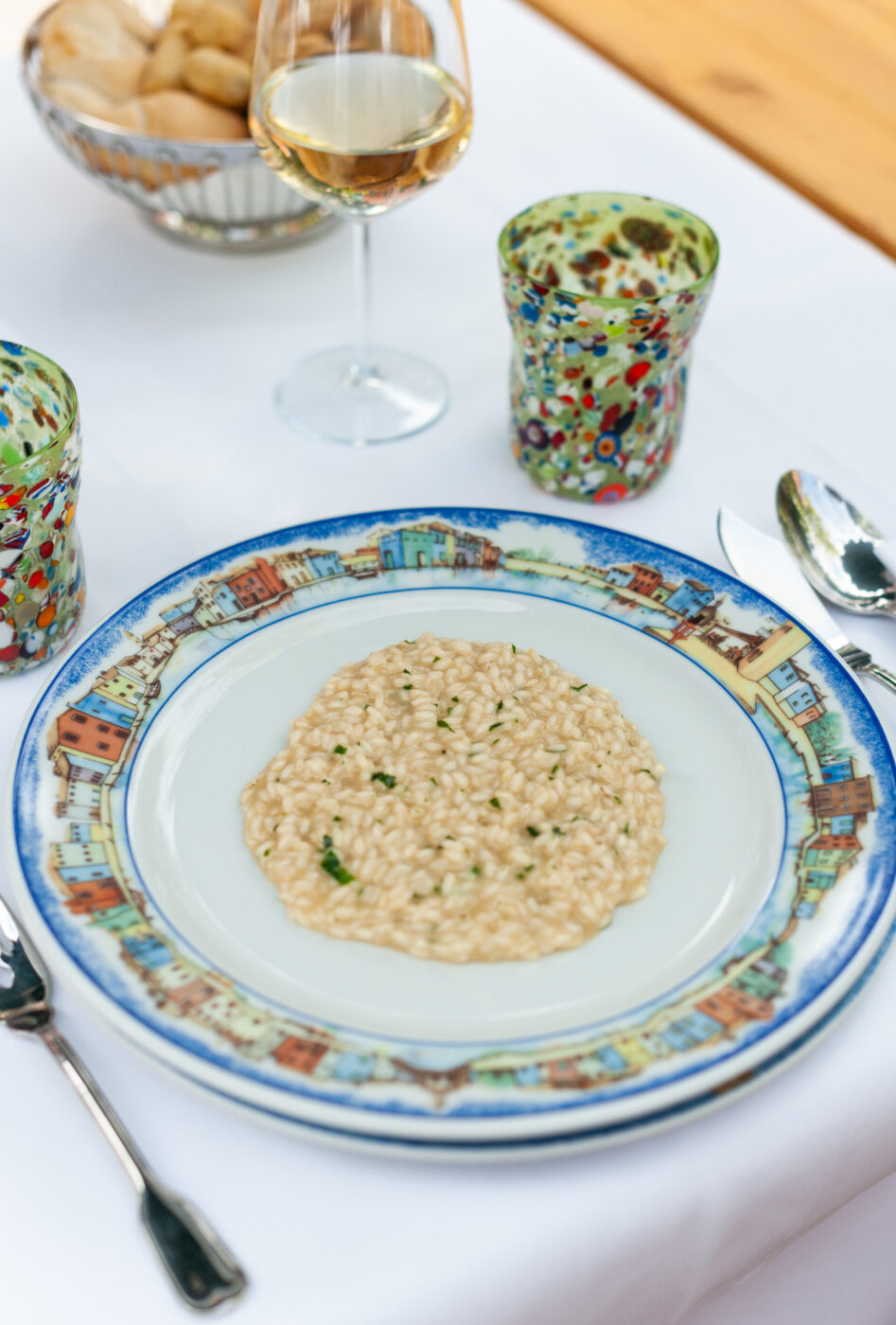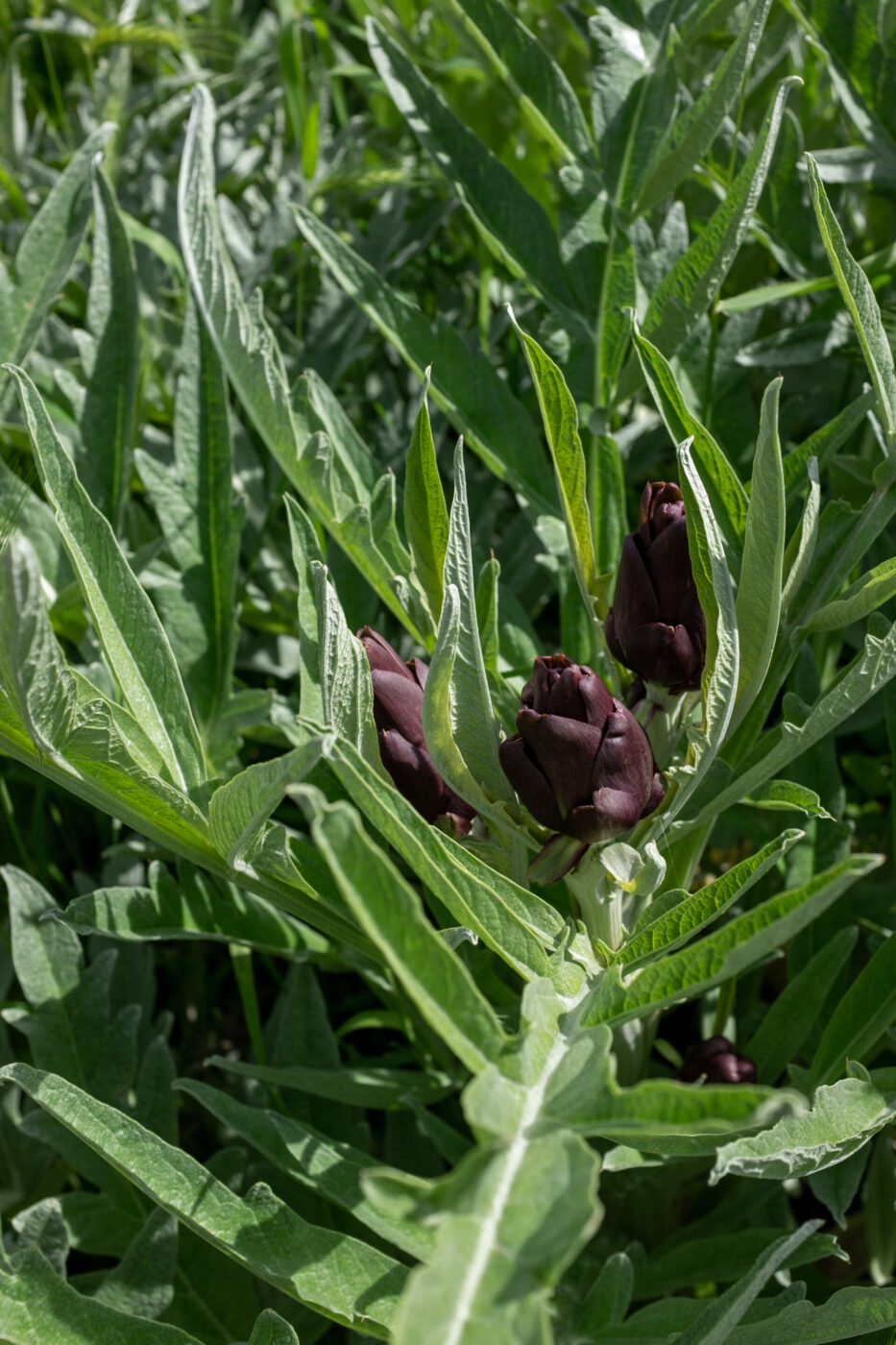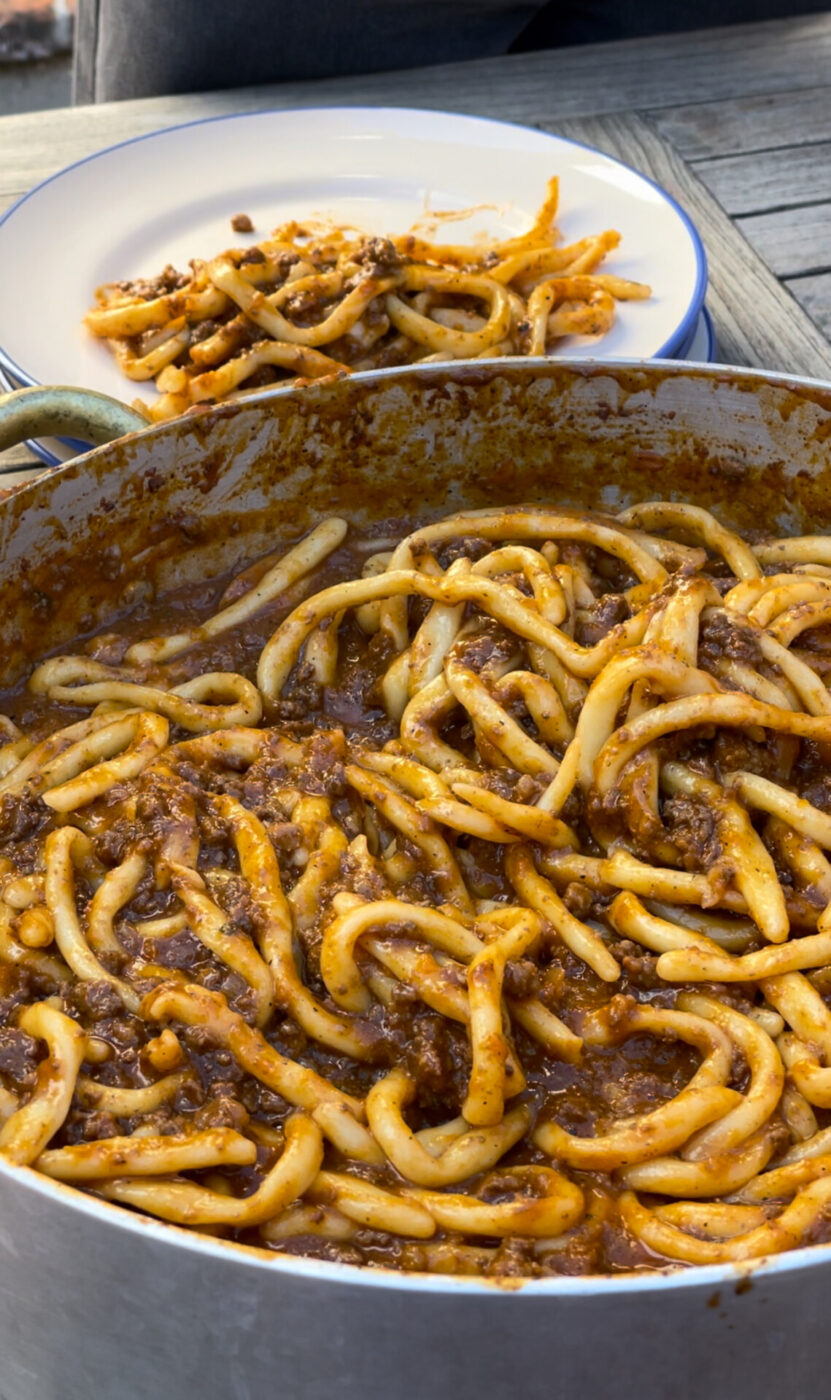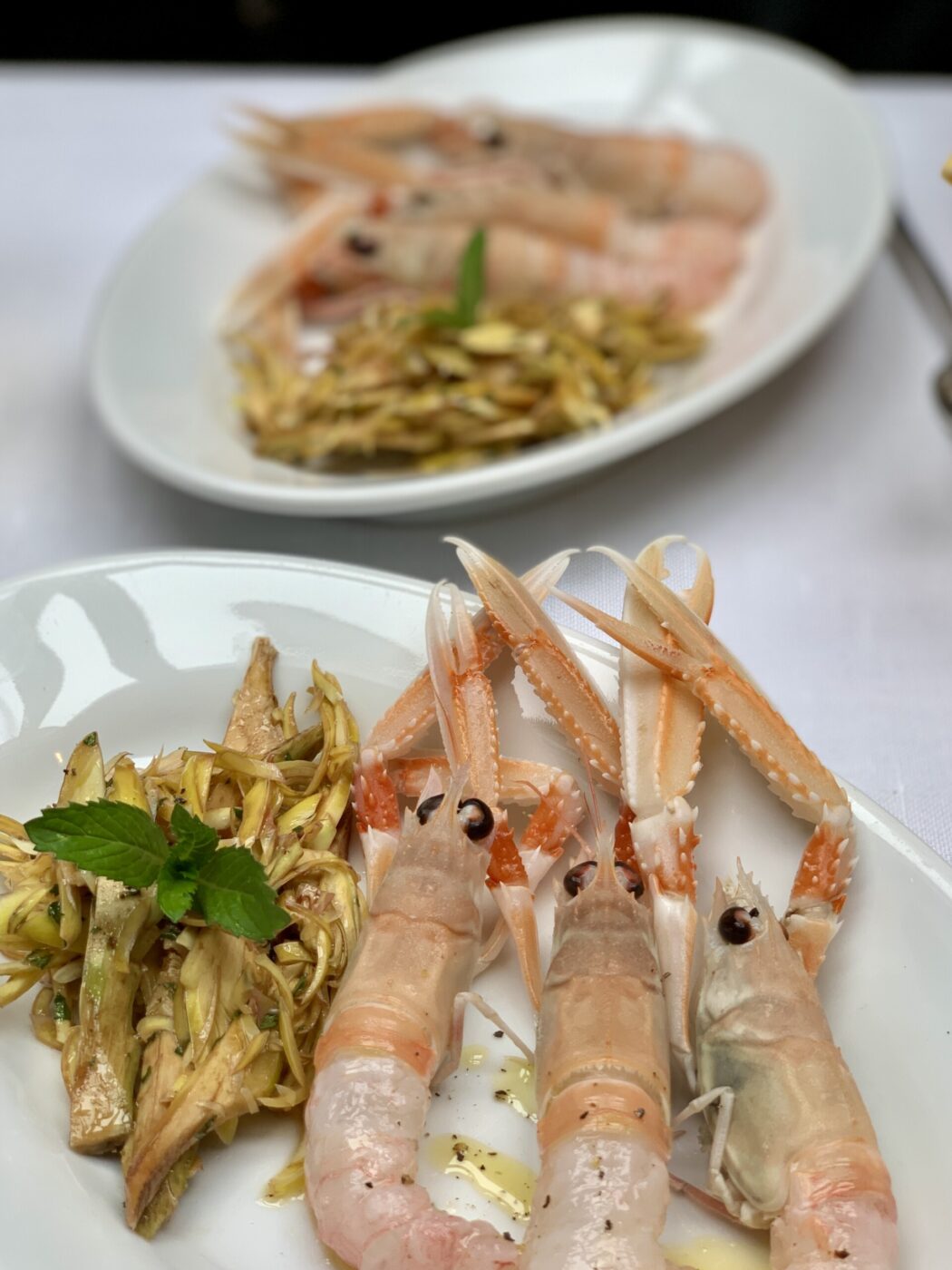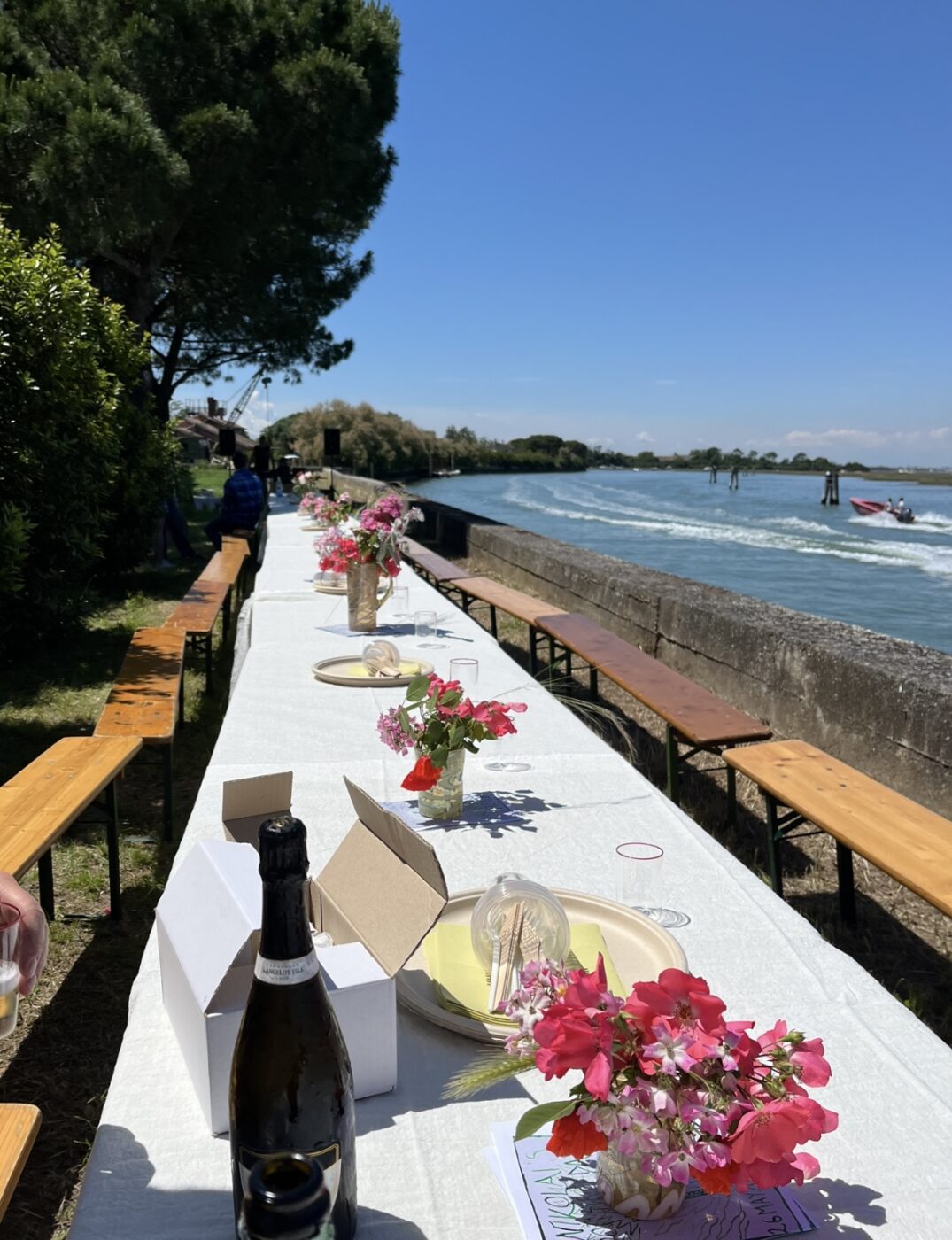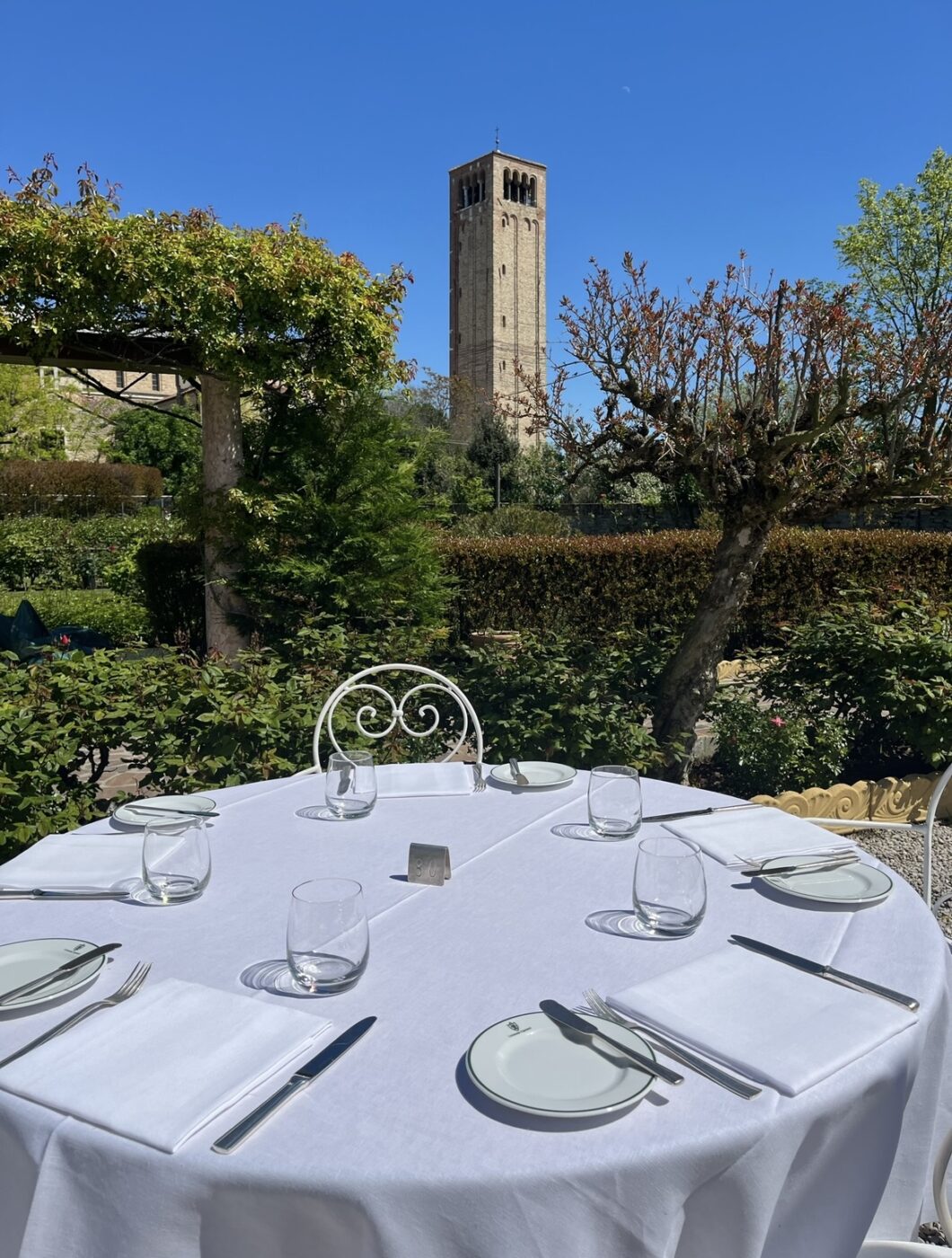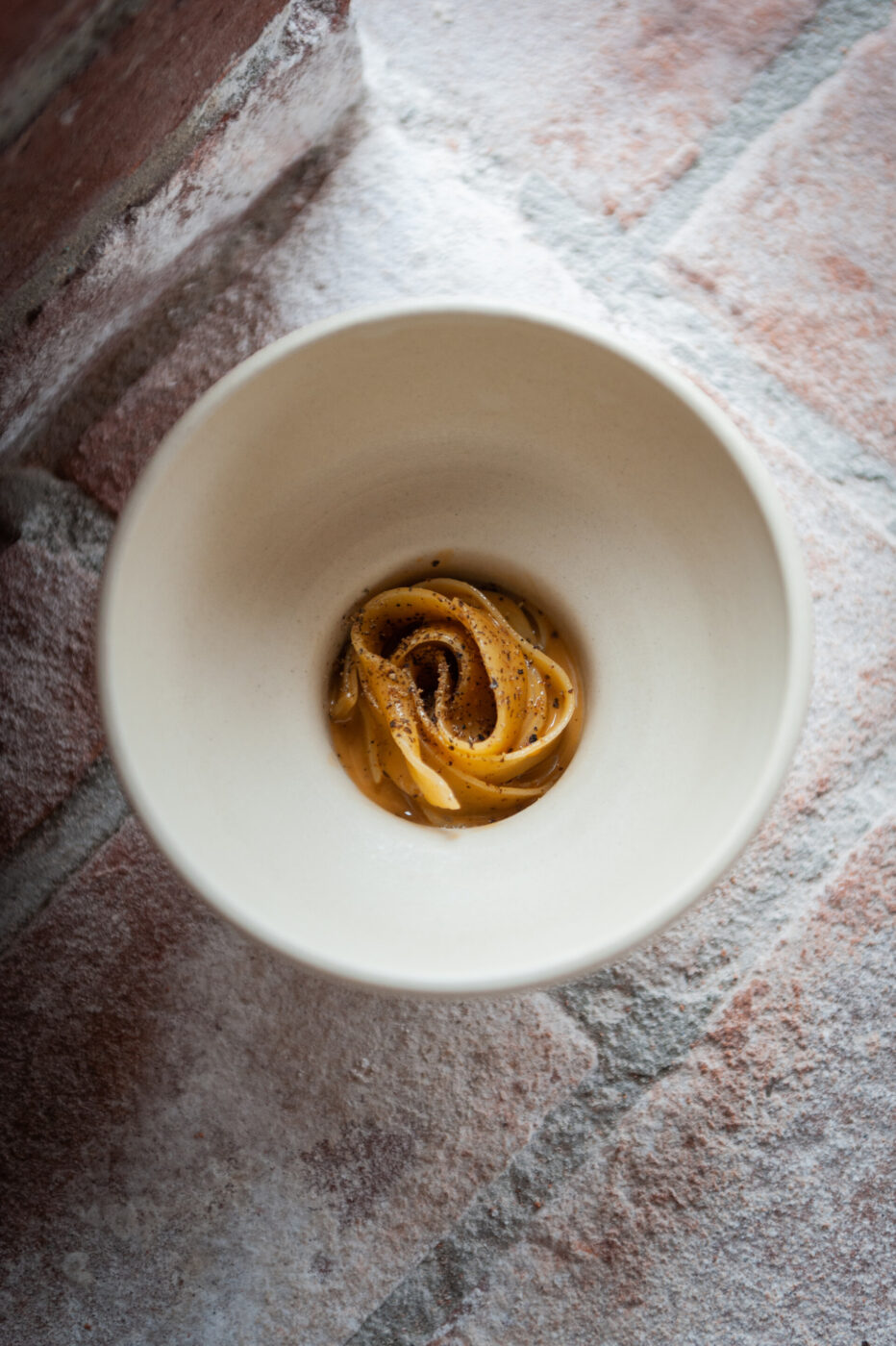Leaving “mainland” Venice for the Lagoon has a specific motive: you’re either going to swim, to fish, or to eat. Or, more likely than not, a combination of all three. Whether you take the Vaporetto or head out on your own boat (or a friend’s), adventures await the second Piazza San Marco’s campanile starts to fade into the distance. You don’t necessarily need a destination, or even direction, at the start of the day. If you’re anything like me and my friends, we just drift around, tying up on our whims, floating towards what we eventually fancy for lunch. Because here, what you want on your plate directly affects what route you take.
Venice, and its cuisine, is as much about the satellite islands as it is the nucleus of Venice proper. I need only mention that Torcello was the first “home” of the Venetian people before they migrated to the marshy area that surrounds Rialto 1,200 years ago. This is even more the case when you consider that Venetians still depend on the Lagoon for the food that sustains them. A brief stroll around the bustling Rialto market confirms this; just look for the term “Nostrano” prominently inscribed on the produce signs, indicating that the fish or vegetables have been sourced either from the Lagoon or cultivated on one of the various islands.
A quick roll call before getting to the main topic of food. There are over 15 islands dotted across the Venetian Lagoon, with countless other embankments whose names are only really used by the locals. Murano and Burano are arguably the best known islands to tourists thanks to their glassblowing traditions, but others with their own communities include Sant’Erasmo, Torcello, Lido (Malamocco and Alberoni), Le Vignole, and Mazzorbo. Over time, I’ve come to know each of them specifically by what food I can expect to consume on my travels across the waters; the following is your guide on what and where to eat on the main islands of the Lagoon.
Burano
The Dish: Risotto di Gò
The Place: Gatto Nero
A commitment to preserving the ecosystem of the Lagoon is more nuanced than just procuring ingredients from local fishermen; it’s also about respecting traditions and the seasons, and skillfully adapting to challenges. One prime example of this is the dish risotto di gò (also called risotto alla buranella) from the island of Burano. Gò, or ghiozzo, is a small, fatty fish only found in the Venetian Lagoon–specifically in the muddy, gucky parts. They’re 20-25 cm in length, spiny, not much to look at, and a pain to prepare because of their countless bones. Their low market value historically meant that it was more often the Buranese fishermen who used the fish in their own home cooking rather than trying to sell them. But in the right hands–and with the right rice (carnaroli)–they morph into something delicate, sweet, and entirely symbolic of the island.
I think it’s fair to say that Gatto Nero is the place to go for risotto di gò… And there are legions who agree with me, especially if I follow this claim with the observation that Gatto Nero is the place to go when you want a meal indelibly tied to the Lagoon. Chef Ruggero and his son Massi are committed to using the freshest ingredients–Massi himself takes his fishing boat out at dawn every day. The motley crew of local fishermen who supply the restaurant live along the same canal and can often be found drinking together, attempting to convince people to head out with them to fish for baby squid (an offer I need to take them up on).
Burano, too, has other local delicacies. Pasticcerias here and in Venice are loaded with bright yellow s-shaped cookies called buranelli or bussolai, stemming from a time when fishermen’s wives would bake batches to send along on their husband’s long voyages. They’re perfect when dunked into a sweet glass of wine or warm morning coffee.
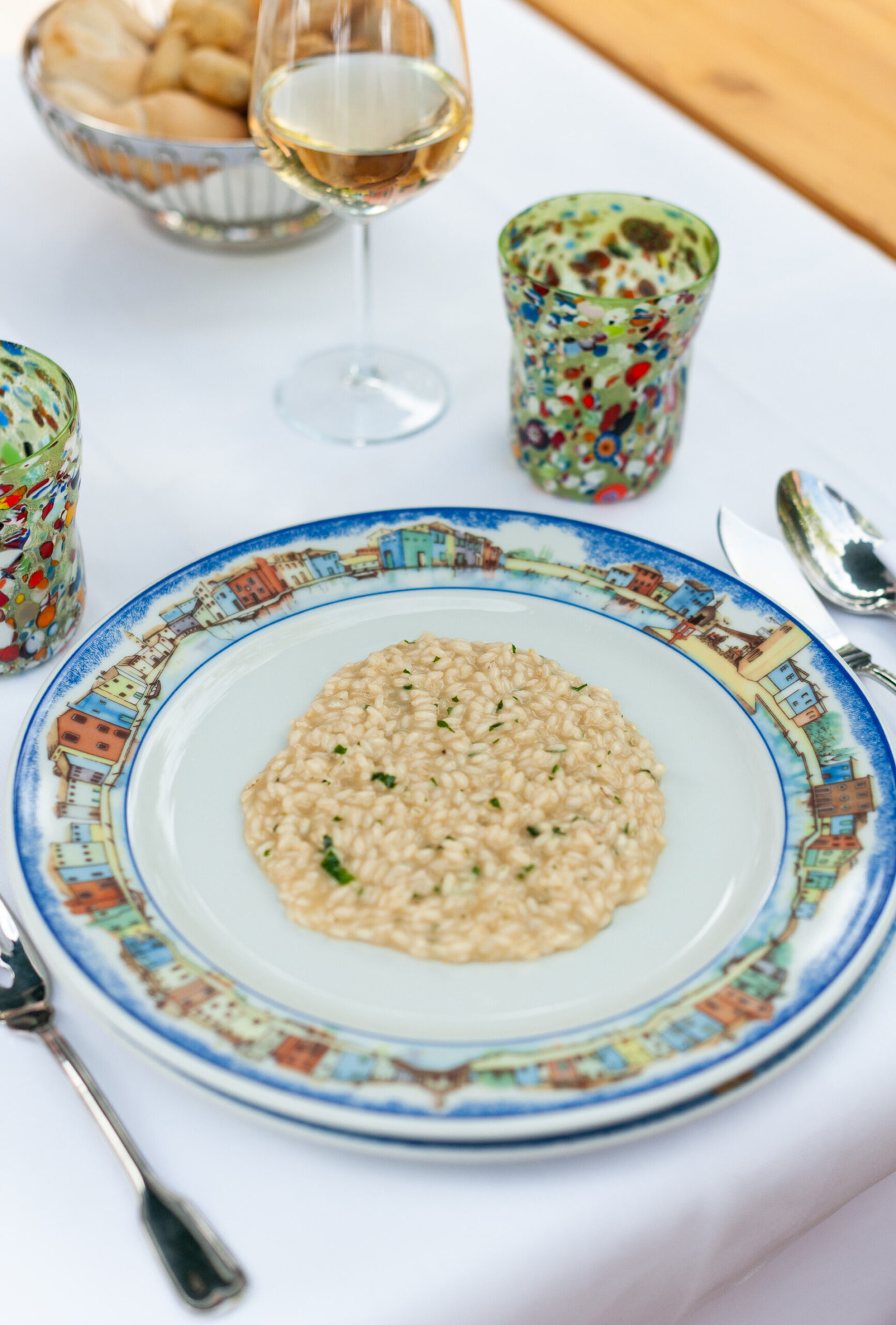
Risotto di Gò; Photo by Valeria Necchio
Sant’Erasmo
The Dish: Castraure sautéed with parsley and garlic
The Place: N’s farm (sorry, some segreti must remain)
Sant’Erasmo has earned the reputation as “the garden of Venice” since it serves vegetables to the principal island. This is even more deserved thanks to Cesare Benelli of Al Covo, who established Osti in Orto in 2020 with the goal of growing organic produce to supply to a consortium of restaurants across Venice. The successful initiative features a four-hectare plot of vegetables–among them zucchini, radicchios, chocories, and artichokes–that can be sampled at 13 of the city’s restaurants, including Antiche Carampane, Al Covo, and Alle Testiere.
It is for its artichokes that Sant’Erasmo is most renowned. So much so that the locals host an entire festival dedicated to the vegetable every second Sunday of May, serving an array of recipes typical to the island. Perhaps the most emblematic is castraure (namely the first flowers of the artichoke plant that are literally “castrated”) sautéed with garlic and parsley. Simple, yes, but entirely unique, for the castraure of Sant’Erasmo are a beautiful violet hue, akin to the darling buds of May–which in a way, they are.
There are no restaurants of note on Sant’Erasmo; it’s more of a residential place dotted with family farms. Therefore, the key is making the right friends in order to eat the delicacies of the island in situ. In my case, I befriended the ebullient N who happens to own an artichoke farm and vineyard overlooking the lagoon. When he held his 30th birthday party there one heady Sunday in May, artichoke was naturally on the menu. His favored method of preparation? The classic castraure with parsley and garlic, accompanied by seafood by Massi and the team from Gatto Nero.
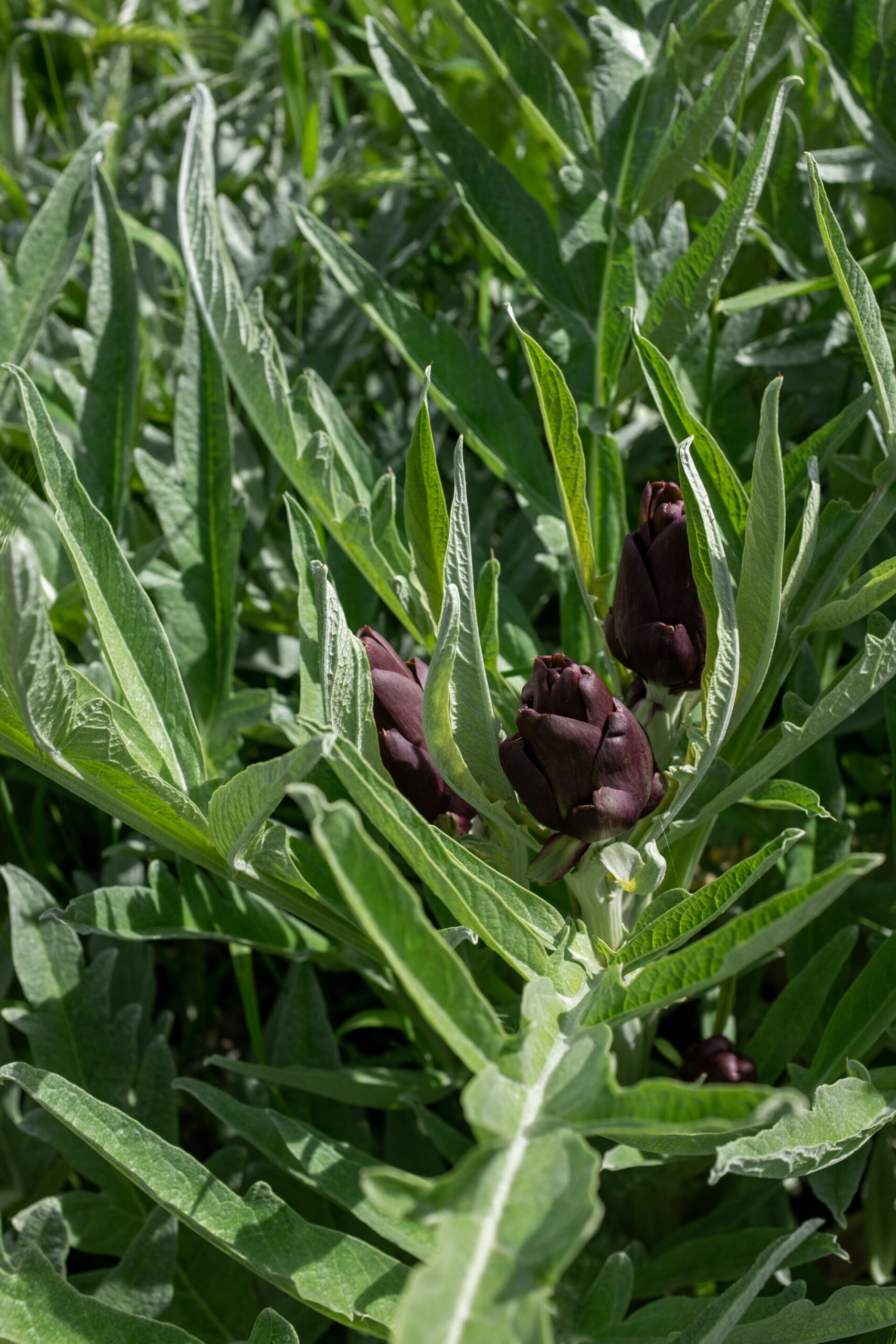
Castraure; Photo by Valeria Necchio
Murano
The Dish: Bavette alla Busara
The Place: Busa alla Torre da Lele
Murano is a strange one. The island of choice for day trippers from Venice proper, it’s overrun with people looking for a quick meal before catching the heaving vaporetto no.12 back to the city. The emphasis on glass production seems to have obscured the focus on its local dishes as well, yet you can find a few great places.
The standout is Osteria Acquastanca–its elegant setting and refined dishes entirely welcome on an island that can feel overwhelming. But I would venture that Busa alla Torre da Lele is most emblematic of Murano, serving dishes that best represent the island. I first dined here over a decade ago when I was studying Venetian art in university and, to my memory at least, the restaurant remains unchanged. The classics, eaten on yellow tablecloths, include the antipasto alla Busara–loaded with seafood and the obligatory sea snails–and the bavette alla busara: a flat sort of spaghetti tossed in a spicy tomato sauce with large, juicy, local shrimp. The (rare) chili kick is a nod to the ancient trade routes that once connected the Venetian Empire to the East.
The term “busara” could refer to the clay and iron pots fisherman used for cooking their food, which relates to another classic dish from Murano: bisato su l’ara. Come lunchtime, the island’s glassblowing workers would multitask and cook their meals on the hearth of the furnace, which was known as the ara. They would fill clay pots with eel and bay leaves–which also call attention to ancient trade routes–and let the meat slowly cook in its own fat. The dish isn’t really on menus anymore due to the long, long cooking time required.
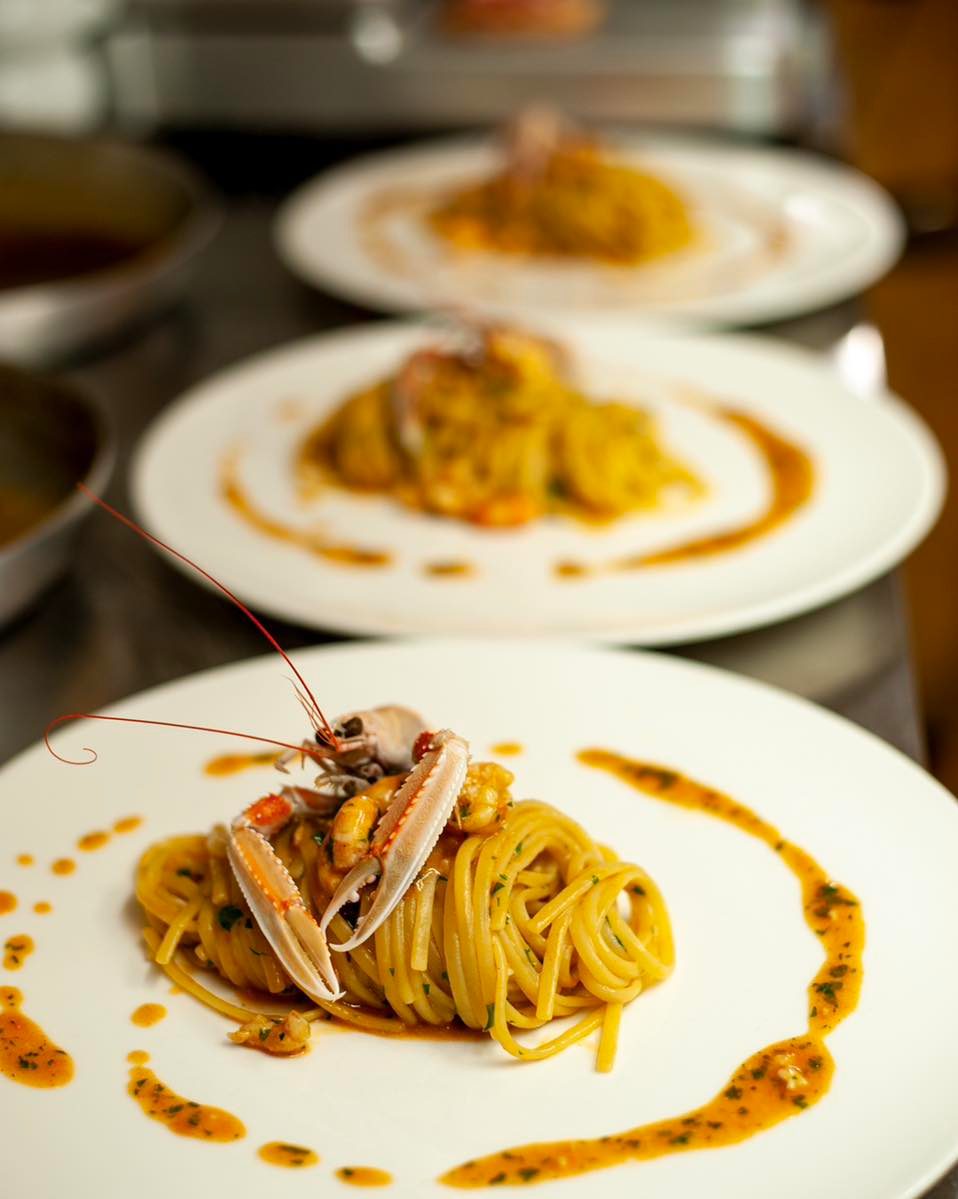
Bavette alla Busara; Courtesy of Ristorante Al Covo
Torcello
The Dish: Risotto alla Torcellana
The Place: Locanda Cipriani
The signature dish of Torcello–risotto alla torcellana–is nothing out of this world, but more a reflection of the recipe’s connections to the produce of the Lagoon. Much as with Burano’s risotto di gò, rice acts as a simple vehicle for something the island has plenty of: veggies. A quick stroll from the vaporetto stop reveals just how uninhabited the island is, and instead how much is given over to agriculture. Thus, it’s little surprise that seasonal ingredients are the lynchpin of Torcello and of the risotto, with the recipe for the latter changing monthly depending on which herbs and vegetables are at their peak.
The best place for risotto alla torcellana is Locanda Cipriani, as much for the food as for the restaurant’s history and setting. Beloved by Ernest Hemingway, Locanda Cipriani overlooks the 9th century basilica–a stunning building standing tall in contrast to the endless green fields and blue waterways. Come spring, the restaurant’s garden is in its full and lush glory, and the roses by the pergola are perfectly in bloom. The ingredients for your risotto are picked just meters away in the Cipriani vegetable garden; there’s nothing better than a languid lunch of Cipriani signatures–carpaccio, cannelloni with veal ragù, fegato with polenta–plus the all-import risotto alla torcellana to instill a genuine sense of place.
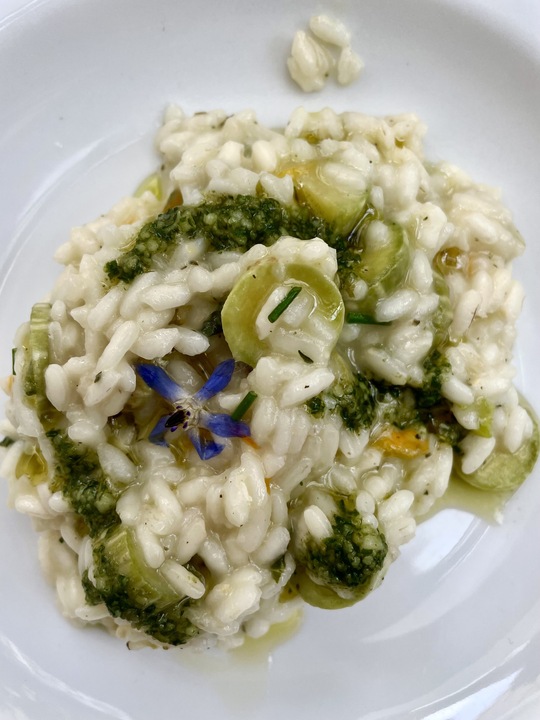
Risotto alla Torcellana
Mazzorbo
The Dish: Dorona Vino Bianco
The Place: Venissa
I think it’s fair to say that wine can constitute a signature dish, and on the island of Mazzorbo, the focus certainly is on wine–specifically the white grape Dorona di Venezia. Formerly cultivated across the Venetian Lagoon (including in Piazza San Marco, which used to have a vineyard), the variety slipped into near extinction following the devastating floods of 1966. However, Gianluca Bisol’s chance rediscovery of a small vineyard of Dorona on Torcello saved this ingenious variety, and, since 2002, the emphasis and cultivation of the grape on Mazzorbo has led the vine to become the island’s figurehead. Today, there’s only one hectare of Dorona di Venezia vineyards in the world, with 35,000 bottles produced annually by the winery (and Michelin-starred restaurant) Venissa.
This white wine is macerated like a red, with long skin contact that brings longevity, structure, and color to the wine. The touch of salinity in each bottle calls back to the terroir: a land that is constantly threatened by salt and water from the aqcua alta that floods the low-lying vineyards. A quintessential trip to Venissa means you’ll dine incredibly well, but you should really come to sip something inextricably linked to the Lagoon.
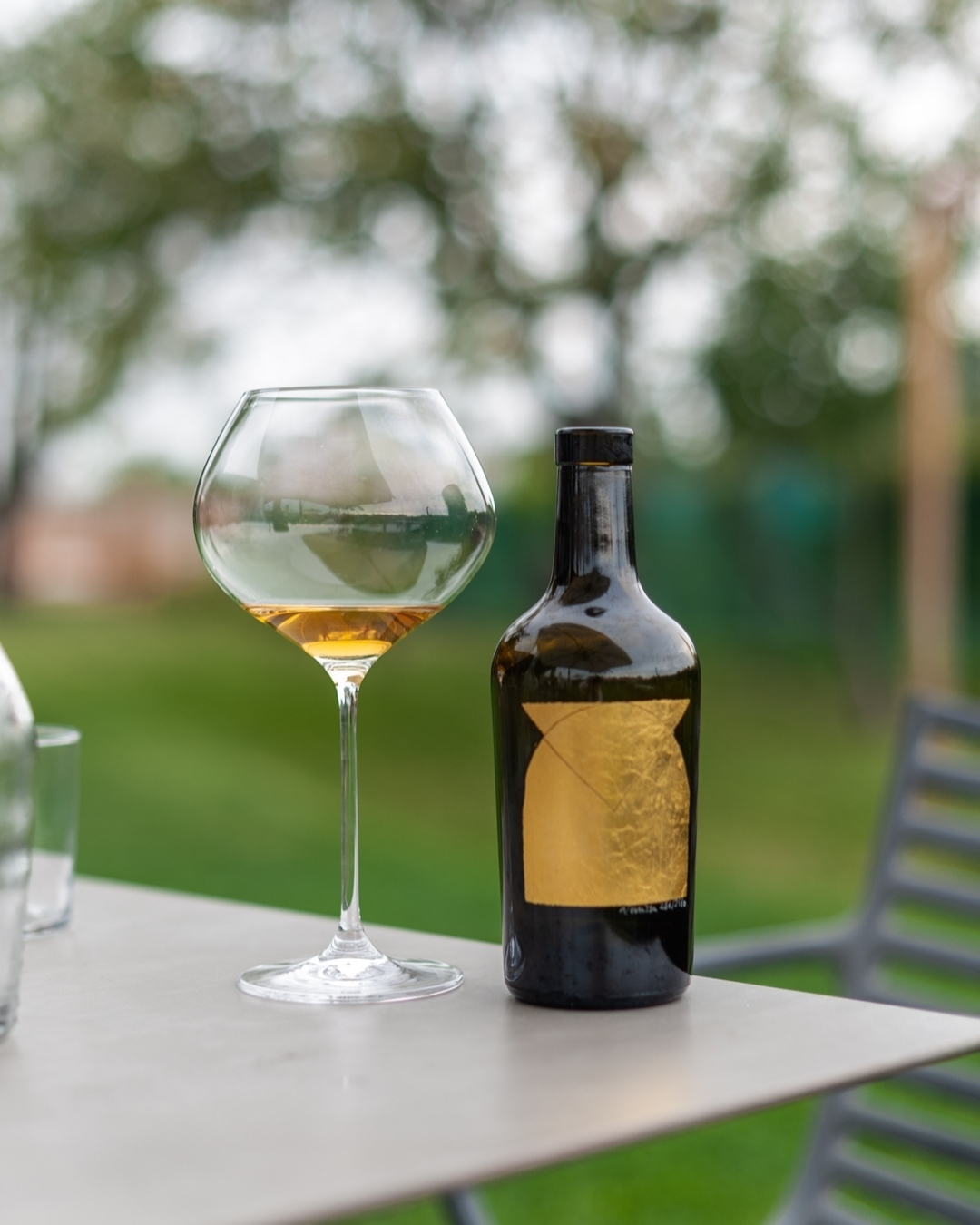
Dorona Vino Bianco; Courtesy of Venissa
Le Vignole
The Dish: Ragù d’Anatra
The Place: Aboard the Eolo
The island of Le Vignole derives its name from the vineyards that have historically been planted there. But now, food is the focus, for Le Vignole is the domain of Mauro Stoppa. Something of a local legend, Mauro resides between his small vineyard and the Eolo, his bragozzo with its flat-bottom that allows him to sail to some of the shallowest, most remote areas of the Lagoon.
Here, at the margins of the Lagoon, locals still engage in duck hunting à la Hemingway, and their game finds its way into another emblematic dish: ragù d’anatra. Traditionally served with bigoli, the sugo’s spices, such as cinnamon and bay leaf, underscore how this dish is entirely Venetian. These spices, together with pepper, ginger, cloves and nutmeg, became central to Venetian cooking centuries ago when they were imported to Venice from the East by Venetian traders along what came to be known, unoriginally, as the Spice Route.
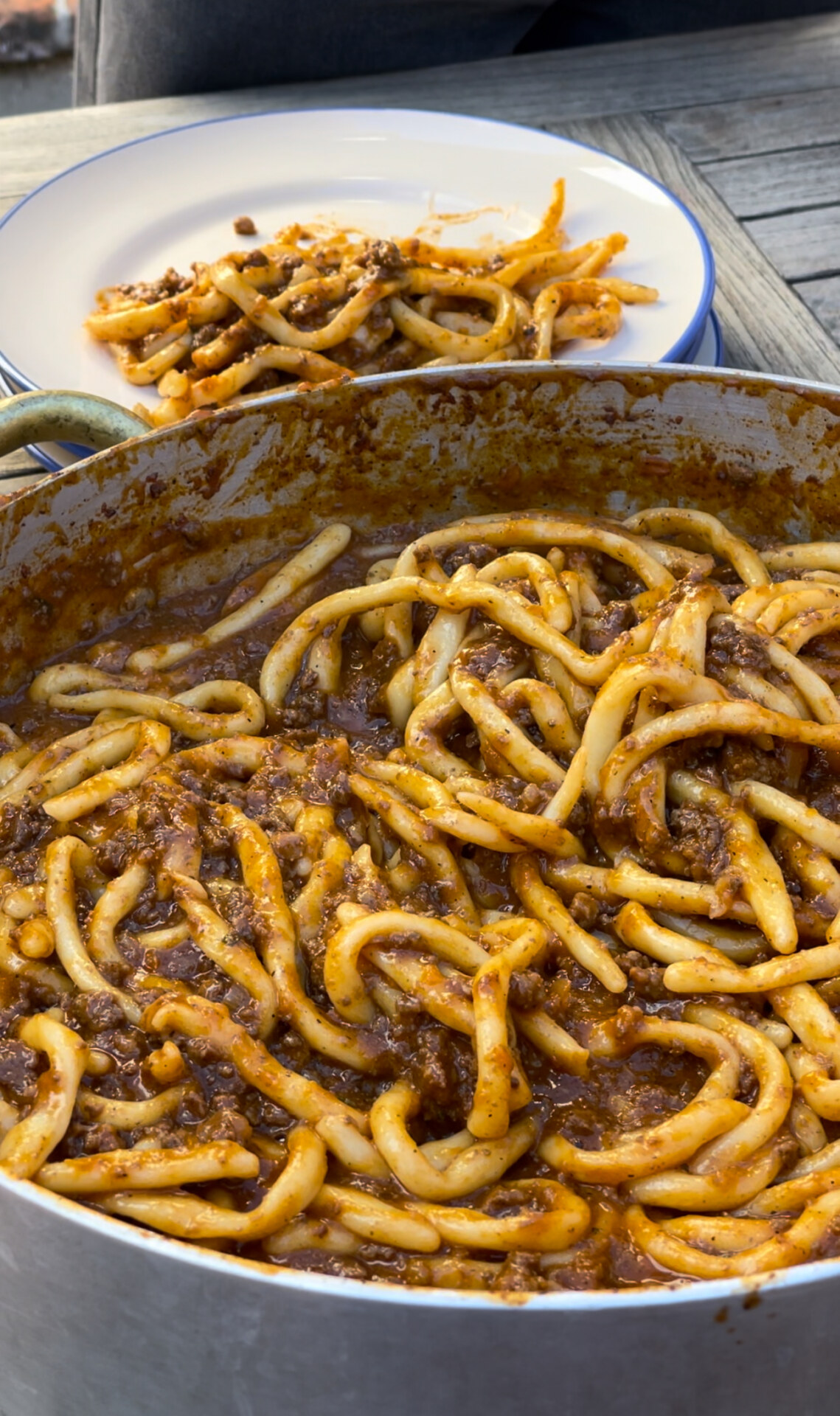
Malamocco
The Dish: Carciofi di Malamocco con Canocce
The Place: Le Garzette
Somewhat surprisingly, Malamocco’s specialty dish is also artichokes. But it’s no coincidence that many artichokes grow here, for the microclimate of the Lagoon combined with the clay-rich soil and its high salinity provide perfect growing conditions. You’ll see this in the tiny strip of Lido between Malamocco and Alberoni, where the land often serves a purely agricultural role. Here, farmsteads cultivate grape vines, crops of asparagus, aubergine, tomatoes, and the beloved purple artichokes. Recipes in this part of the Lagoon are simple because the raw ingredients are so excellent that they don’t require complication.
Nowhere is this better exemplified than at Le Garzette, a tiny agriturismo that few know of (and which I share with reluctance). Their menu emphasizes the vegetables they harvest from their land, paired with simply cooked fish and shellfish from the Lagoon. As with Sant’Erasmo, their pride and joy is the castraure, which they serve in a simple salad tossed with olive oil. It goes perfectly with steamed local canocce (Venetian mantis shrimp) and a sprinkle of parsley.
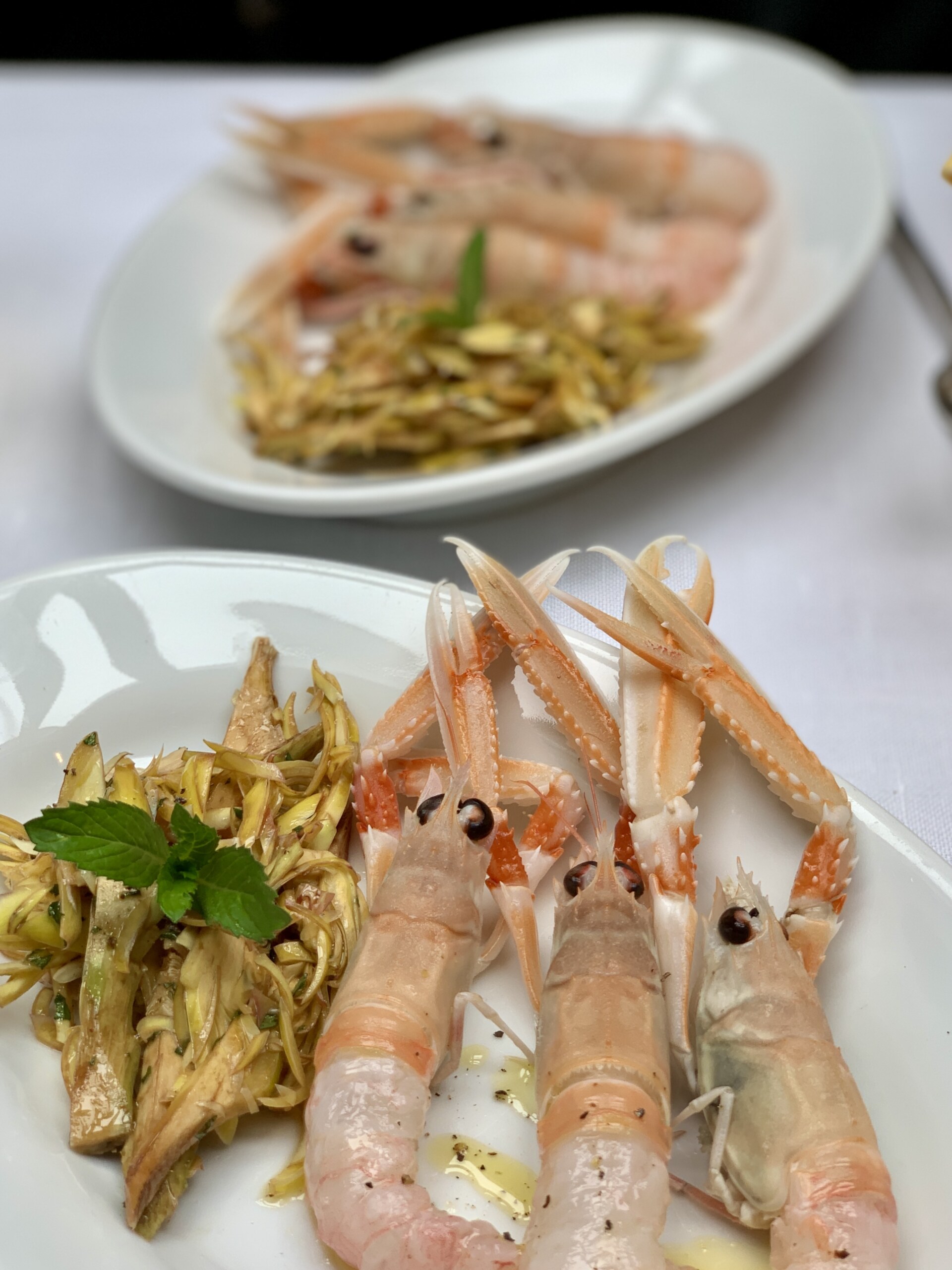
Carciofi di Malamocco con Canocce; Photo by Camilla Purdon @millpurdon
Pellestrina
The Dish: Pasticcio di Pesce
The Place: Da Celeste
You never arrive in Pellestrina by chance; a day flitting around the Lagoon is unlikely to include a jaunt to the low-lying island at the furthermost reaches of the Lido. If you find yourself in Pellestrina, it’s for one of two main reasons: to either get away from it all, or to eat. Of course, as with the rest of the Lagoon, fresh fish is a given, but what’s best here is the pasticcio di pesce. Quite literally “fish pie”, the freshest Lagoon seafood–be that branzino, merluzzo, gamberetti, vongole, and/or cozze–gets formed into a lasagna and baked.
Pasticcio di pesce is served across the Venetian Lagoon, but it’s most renowned at Da Celeste; this family-run restaurant has preserved the same traditions, flavors, and atmosphere since 1986, when it was founded by a Venetian shipyard metalworker. Their pasticcio is a wonder, brimming with the freshest fish and cooked in a way so that the pasta stays soft, but the top gets crunchy. When eaten on their jetty that looks out onto the seemingly infinite Adriatic, there’s no greater affinity with the ingredients on the plate.
Chioggia
The Dish: Cassopipa
The Place: El Gato, Antiche Carampane in Venice
The cultural conduit that is the Lagoon also created Chioggia’s emblematic dish: cassopipa. Once again, spices imported from the East such as cinnamon and nutmeg merge with the produce of the Lagoon–squid, mussels, clams. These elements are then simmered in white wine and served with bigoli–long, hearty, thick flour-and-water noodles from Veneto and eastern Lombardy. This dish is typical of Chioggia, the islet that marks the end of the Lagoon. My favorite place to eat it here is El Gato, a stunning, bright restaurant where the dishes all taste of the Lagoon.
However, coming full circle, I would wager that the dish is prepared finest in the heart of Venice, at the fabled restaurant Antiche Carampane. For chef and owner Francesco Agopyan, the cassopipa’s importance is tied to his uncle, who, 40 years ago, reinvigorated this historic fishermen’s recipe. Francesco shares that it’s a dish formed from necessity: the spices were originally included to disguise the bad odors and flavors of the fish–probably not the freshest, considering it was whatever the fishermen hadn’t sold at market. Now, however, he argues the spices and combination of fish in cassopipa prove that the Lagoon is one great melting pot. You can’t argue with that.
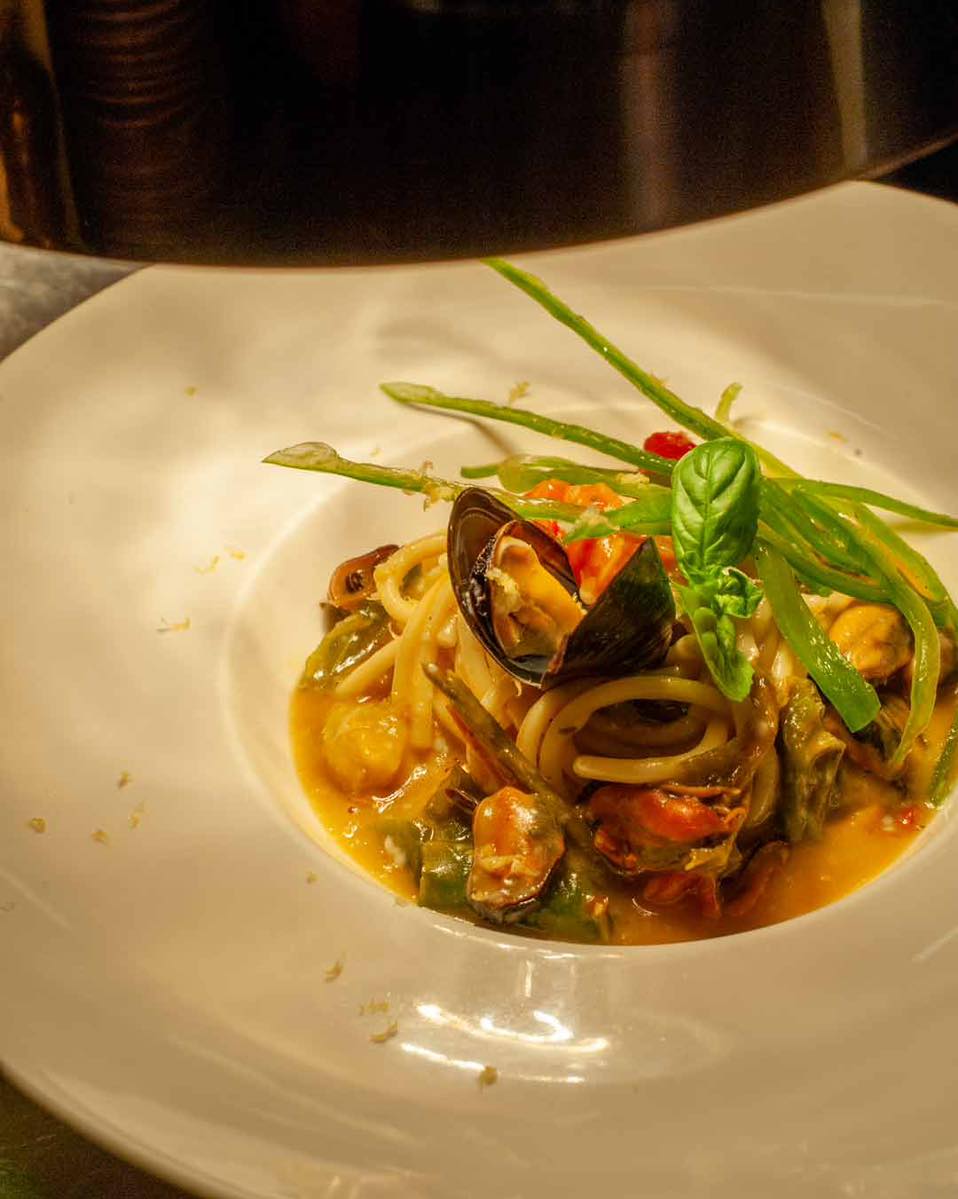
Cassopipa; Courtesy of Al Covo
It might come as no surprise that, despite the separate culinary traditions of each island, there’s an intricate social network that joins them all. Take, for instance, a Blue Crab Dinner hosted at Gatto Nero last year, designed to increase awareness of this invasive predator in Venice’s delicate ecosystem, one that targets the prized moeche (soft shell crabs). The dinner was engineered by the aforementioned N, who enlisted the involvement of Francesco Agyopan of Antiche Carampane and Cesare Benelli of Al Covo. Bringing together chefs from across the Lagoon not only showcased the differences in their approaches, but also that they speak a common language, one that is entirely Venetian.
What this language means is protecting the respective culinary heritages of each island and taking pride in them. At the same time, it’s about recognizing that the waters of the Lagoon do serve as the great “melting pot”, and that the currents are the threads connecting everyone. The countless recipes, ingredients, and traditions of this ecosystem deserves a lifetime of sailing between the islands. See you on the waters.


